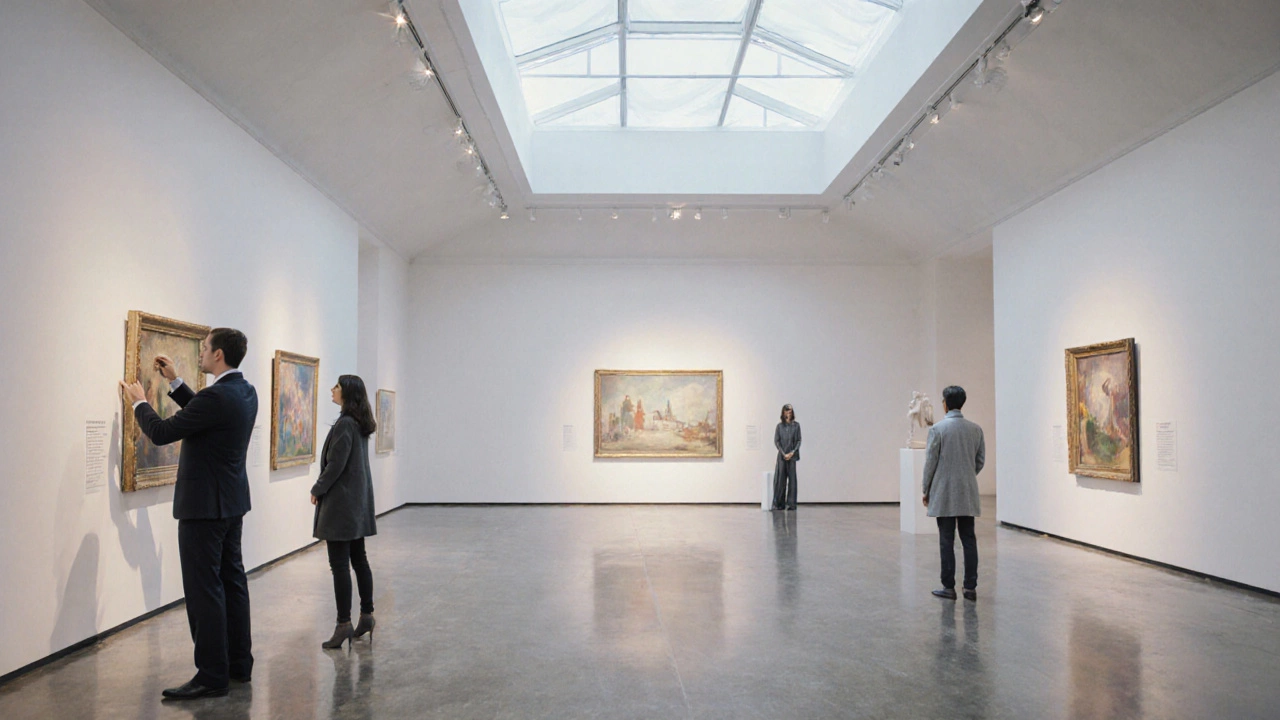Understanding Museum Terms: A Simple Guide for Everyone
Walking into a museum can feel like stepping into a secret code. Signs say "giclée", labels mention "curatorial", and audio guides throw around words like "installation". If you’ve ever felt lost, you’re not alone. This guide breaks down the most common museum terms so you can enjoy art without the jargon.
Common Museum Words You Should Know
Giclée – A high‑quality ink print made from a digital file. Collectors like it because it reproduces colors very accurately. Spot a signed giclée? It’s often a limited edition, not a mass‑produced poster.
Curatorial – Anything related to the people who choose and organize artworks. A curatorial team decides which pieces go together in an exhibition.
Installation – An artwork that fills a space, sometimes using objects, light, or sound. Unlike a painting on a wall, an installation can surround you.
Acquisition – When a museum adds a new piece to its collection, either by purchase, donation, or loan. The acquisition label often tells you where the work came from.
Catalogue Raisonné – A comprehensive, scholarly list of all known works by an artist. If you’re researching a Picasso, the catalogue raisonné is the ultimate reference.
How to Use Museum Terms When Visiting
Knowing the words makes the visit smoother. When you see a sign that says “temporary exhibition”, expect a show that will be replaced soon. If the audio guide mentions “medium”, it’s talking about the material the artist used—oil, acrylic, or something experimental.
Ask staff about “provenance”. That’s the ownership history of a piece. A clear provenance can boost a work’s credibility and value. Likewise, “conservation” refers to the work museums do to keep art in good shape; you might see a conservator behind a glass table, cleaning a sculpture.
Don’t ignore “interpretive panels”. These short texts give you the artist’s background, the work’s meaning, and any special techniques used. Skim them if you’re in a hurry, but a quick read can turn a vague impression into a deeper connection.Finally, remember that “accession number” is just a museum’s inventory code. You’ll see it on labels and in online catalogues. It’s useful if you want to look up the same piece later on the museum’s website.
Armed with these basics, you’ll spot the differences between “modern” and “contemporary” art, understand why a portrait’s eyes seem to follow you, and appreciate why a sculpture might be made from cheap, everyday materials. The next time you step into a gallery, you’ll read the signs like a pro and enjoy the art without the confusion.

1 Oct 2025
Discover the precise difference between an art exhibit and an art exhibition, with clear definitions, real‑world examples, a handy comparison table, and a FAQ to master the terminology.
Continue reading...
